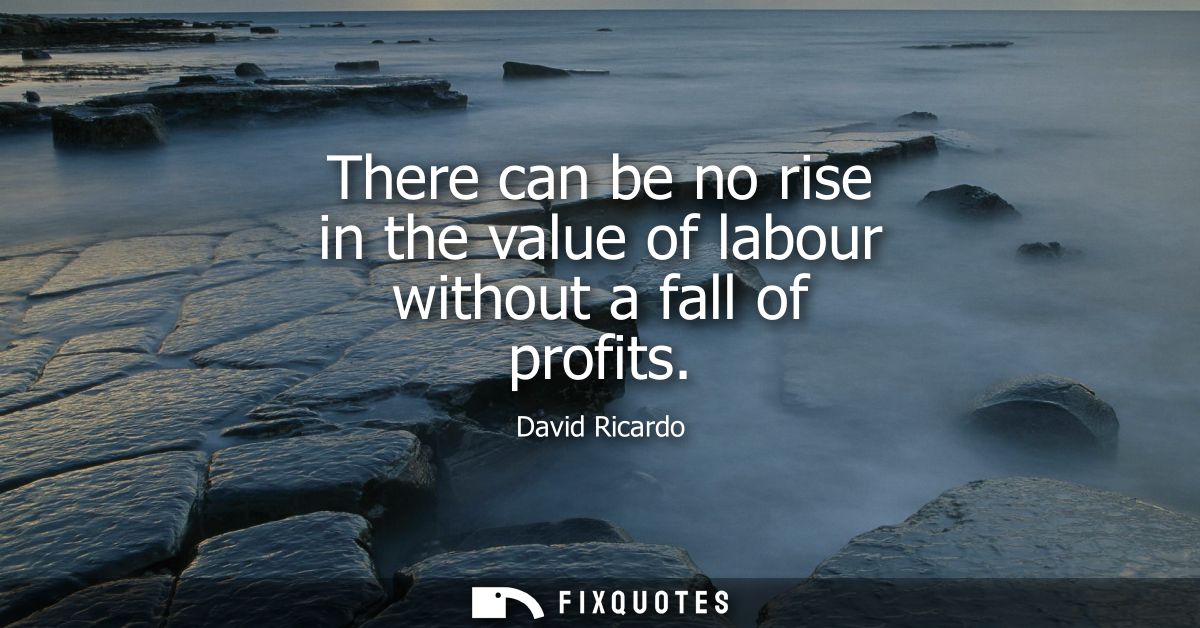"There can be no rise in the value of labour without a fall of profits"
About this Quote
David Ricardo’s assertion hinges on the foundational principles of classical political economy, particularly the distribution of income among the primary factors of production: land, labor, and capital. When discussing the relationship between the value of labor and profits, Ricardo posits an inverse correlation. As wages increase, interpreted as a rise in the value of labor, there is an inevitable reduction in the share of output allocated to profits.
This analysis originates from the assumption of a relatively fixed pie of total production at any given moment within an economy. The total value produced by labor and capital must be divided among workers (wages), capitalists (profits), and landowners (rent). If the wages paid to labor rise, the remaining portion available to capitalists as profit is diminished, provided that the value of output and rents remain constant. The mechanism is clear: when employers must allocate a greater share of revenue to labor in the form of higher wages, their residual share, profits, shrinks.
Ricardo’s logic is also tied to the principle of diminishing returns, particularly in the agricultural sector, which was central in his era. As more labor is employed on a fixed quantity of land, productivity declines, leading to higher costs and eventually higher wages to compensate for the rising cost of living (since more expensive food requires higher wages for sustenance). These wage increases compress the profit margins of capitalists, inducing a natural tendency for profits to fall over time as economies expand and resources become scarcer or less productive.
Such a dynamic highlights the tension inherent in capitalist societies between the interests of labor and capital. Policymakers and capitalists alike must confront the reality that improvements in the bargaining power or living standard of workers, realized through higher wages, typically come at the cost of reduced profitability for investors and business owners, at least in the short to medium term. This understanding lays the groundwork for later debates about income distribution, economic growth, and social equity.
More details
About the Author

